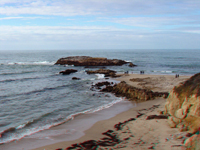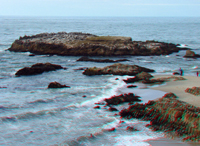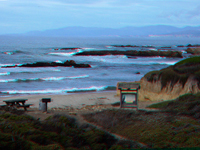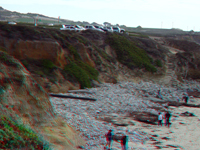
Pescadero.jpg
The headlands at Pescadero State Beach are the northern end of a great block of Cretaceous-age rocks that crop out along the coast in the region between Pescadero Creek and Aņo Nuevo.

Sea stacks like this one at Pescadero State Beach are a haven for bird life and other marine wildlife. Bedrock outcrops exposed in the sea cliffs in the park area are part of the Cretaceous Pigeon Point Formation

Looking north from Pescadero State Beach toward Montara Mountain in the distance.

Sea cliffs of eroding Quaternary marine terrace deposits overlie the bedrock of Pigeon Point Formation. At the base of the sea cliff is a cobble beach that accumulates during high seas (usually winter storms). During the calmer summer months sand has an opportunity to accumulate on the beach.